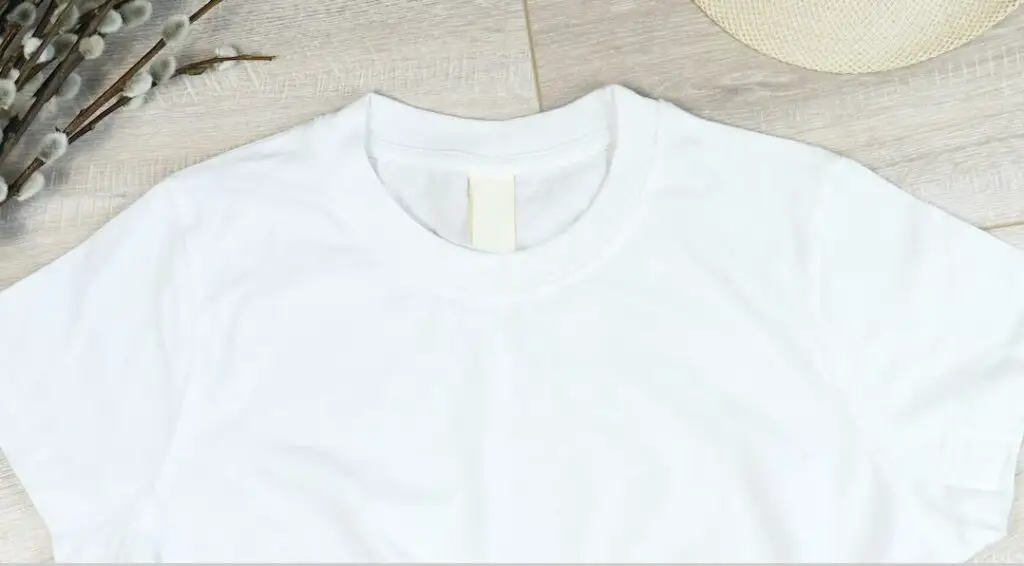Ever removed a shirt from your heat press only to find an undesirable yellow tint on the shirt?
This disheartening discoloration can ruin an otherwise perfect shirt.
You carefully prepared the fabric, set the machine correctly, and pressed the design. So where did it go wrong?
A variety of factors during the heat press process can cause discoloration on white fabrics.
In this post, I’ll break down the most common causes of heat press yellowing. I’ll also give you a few tips to prevent any heat press turned white shirt yellow issues in the future.
Why Is My Heat Press Turning Shirts Yellow?
Let’s go over the common causes of heat press yellowing:
Also Read: Why Does My Heat Press Keep Clicking?

Water or Moisture Residues
When water or moisture on the shirts mixes with fabric, inks, and transfer materials under high heat while pressing, it can spark chemical reactions.
The water molecules act as a catalyst for the release of oxidizing compounds from the fabrics and vinyl that stain shirts yellowish.
Plus, moisture breaks down optical brightening agents added to materials to enhance whiteness.
These brighteners lose their effectiveness when wet, allowing yellow hues to emerge rather than keeping whites vivid.
Excessive Heat
One of the most common reasons why your heat press turned white shirt yellow is because you are using high temperatures.
While you may think more heat equals faster pressing, in reality, excessive temperatures can scorch the fabric and cause yellowing.
Always follow the recommended settings.
Too Much Pressure
Along with the heat level, be mindful of how much pressure your press exerts.
Too much pressure on the vinyl and shirt can flatten the fabric weave and cause yellowing.
Poor Fabric Quality
Low quality shirts can also make them more prone to scorching. So always buy from trusted manufacturers who offer quality t-shirts.
Poor vinyl also has sizing/adhesive issues leading to incomplete heat transfers.
Dirty Heat Platen
It’s easy to overlook platen cleaning between presses, but accumulated vinyl fragments, lint, and other residues can imprint onto shirts and cause staining or discoloration.
An uneven or damaged platen can also lead to inconsistent heat distribution, resulting in discoloration.
Also Read: Parchment Paper Vs Butcher Paper
How To Stop Heat Press Scorching
Here are a few tweaks to your pressing process to keep shirts looking bright white:
Temperature And Time Settings
Dialing in the right time and temp for the fabric is essential to prevent scorching.
For cotton, temperatures of 350-375°F are typically safe, while polyester and blends need much lower heat around 300°F to avoid scorching.
Stay on the lower end of suggested heat settings if concerned about discoloration.
However, avoid the temptation to overcompensate on press duration if using lower heat levels. While time does factor in, excessive heating over extended durations can still damage fabrics.
Adjust The Pressure
Proper pressure adjustment can also help curb heat press discoloration.
Start at a medium level around 4-6 on your machine’s pressure dial, increasing cautiously if vinyl adhesion is incomplete.
Too much compression flattens fabric weaves, damaging shirts. So only bump pressure up slightly if absolutely needed for vinyl application.
Excessive pressure paired with heat is a recipe for crushed fabric and yellowing.
Use Teflon Sheet
Teflon sheet can serve as a protector between the platen and garment.
Not only does it prevent scorching of fabric from direct high heat contact, but it reflects temperature away from shirts to avoid overheating.
Teflon sheet also lets you increase pressure lightly to ensure vinyl adhesion without crushing the shirt beneath.
This slippery barrier lets the platen glide smoothly across shirts for flawless application.
For heat-sensitive fabrics like polyester where discoloration risks run high, these are a must.

Clean Platen Frequently
Keep your heat press platen spotless by wiping it down with alcohol frequently and doing periodic deep cleans.
Replace old platens that are excessively scratched or dented, as surface imperfections prevent even heat distribution which impacts results.
A perfectly smooth platen ensures flawless pressure for prints.
Pre-Wash Fabrics
Pre-treating your fabrics before pressing can also reduce the chance of discoloration.
For white cotton shirts, wash in warm water and dry on high heat to pre-shrink fibers and stabilize sizing before vinyl application.
Inspect shirts beforehand for true white without any dingy characteristics, as old or low quality shirts yellow more easily. 100% cotton provides ideal results, while polyester blends above 50% cotton can also work with care.
Avoid overly thin or pill-prone fabrics that show degradation and thinning from heat washing.
Also Read: Can You Sublimate on Modal Fabric
Allow Proper Cool Down
After applying vinyl, letting shirts cool for a few seconds before removing is key to proper ink setting and avoiding shrinkage distortions.
Keep shirts firmly clamped shut inside the closed heat press for at least 10-15 seconds after the press cycle finishes before reopening the platen.
Allowing garments to cool fully stabilizes the materials and prevents sudden changes in overheated fabrics. Take this resting period into account when calculating full press times, as it completes the pressing process.
Don’t rush to handle shirts immediately after heating. A brief cooling pause makes a big difference.
Bottom Line
Just remember to control temperature, pressure, and cooling. And be choosy about using quality vinyl and fabrics. And follow our other tips!
Don’t get discouraged—with a few adjustments your heat press can work white shirt magic again!

